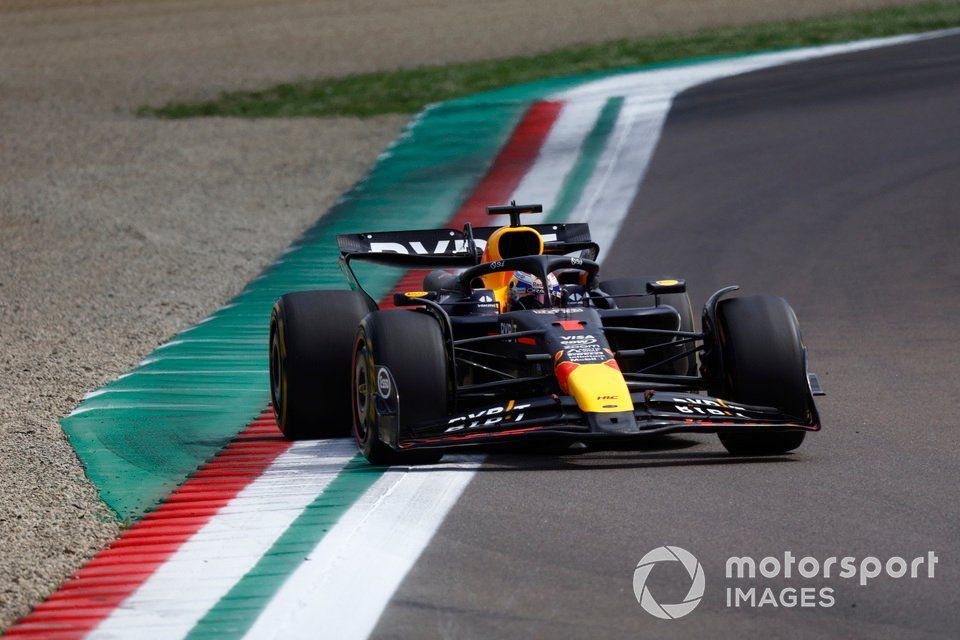In the opening phase of the race, it was Verstappen who had the edge as, after holding the advantage at the start, he was steadily able to eke out a gap on the medium tyres to be more than six seconds clear up until the first round of stops.
Things did not seem to change much as drivers switched to the hard, as Norris, who briefly lost a bit of time getting past Red Bull’s Sergio Perez, did not seem any better off.
The gap stabilised around that six-second mark, then even briefly drifted out to around seven seconds, with Norris appearing to be the man under threat as Ferrari’s Charles Leclerc closed in on him.
But with around 20 laps to go, it was like a switch flicked over in the race and Norris’s car came alive – slowly and steadily he then began hauling in the Red Bull to set up a thrilling end to the race.
From the outside it seemed as though this was a simple case of Verstappen battling some car problem that handed Norris his opportunity, but the reality was much more nuanced than that.
There were two factors at play here – one is that Verstappen’s tyres had fallen out of their perfect operating window and he was unable to recover them.
And then, on the flipside, Norris’s careful management of the hards in their early life helped bring his alive just when they were needed.
As Verstappen said on his struggles: “It was just like driving on ice, really snappy, and just you can feel when the tyres are not gripping up anymore.”
Max Verstappen, Red Bull Racing RB20
Photo by: Sam Bloxham / Motorsport Images
What proved critical here about how Norris avoided the same fate was in how he managed his tyres in the opening phase of that second stint.
One of the characteristics of modern F1 tyres is that much of their overall behaviour throughout a stint depends entirely on how they are treated when they hit the track for the first time.
Attack them super hard and that can negatively impact their temperature and degradation levels later on – costing a driver performance. Bring them in gently, as Norris did, and then the rewards can be great as they hit a sweet spot of performance.
As McLaren team principal Andrea Stella said: “The main factor was the temperature in which you could get your tyres to operate.
“It looked that if you took your tyres to too high a temperature, then the [performance] drop was quite significant. It wasn’t a plateau, but there was a little bit of a cliff and you would lose…
Click Here to Read the Full Original Article at Motorsport.com – Formula 1 – Stories…

